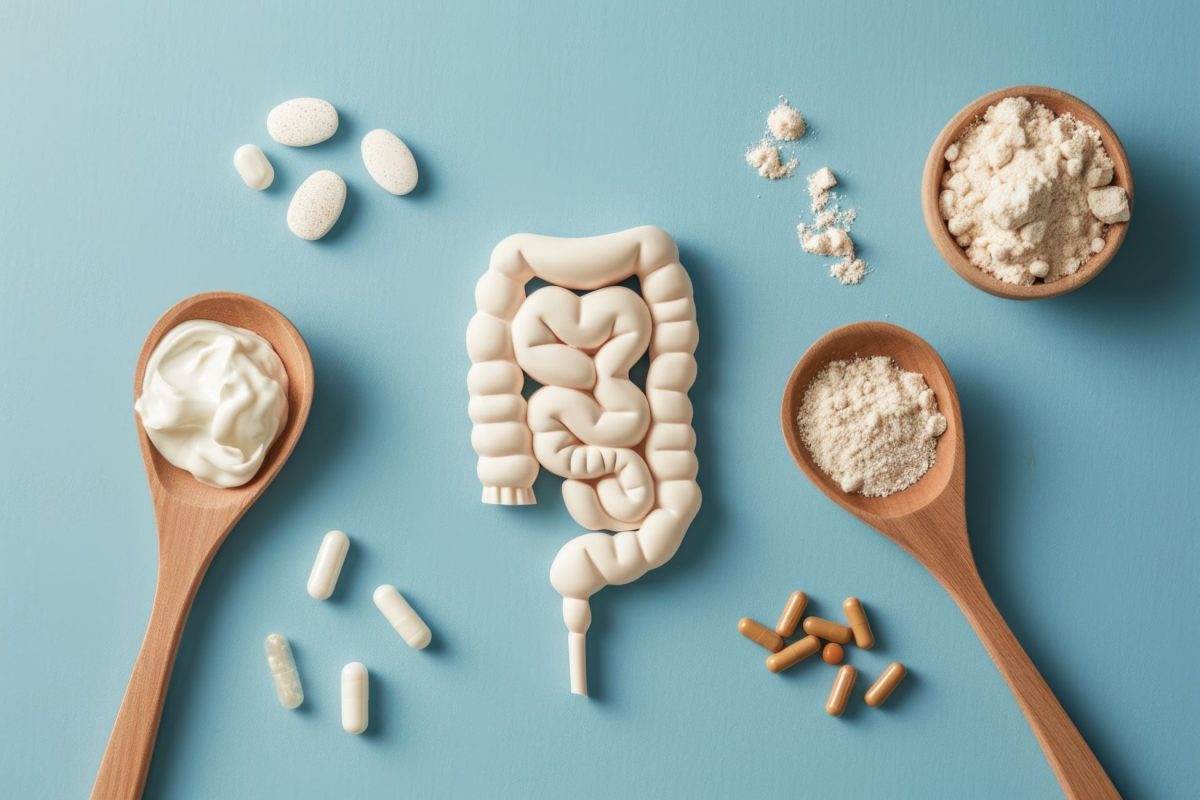Key Takeaways
-
Liposuction financing options for patients include traditional loans, medical credit cards, in-house clinic plans, and pay-over-time apps.
-
Pay-over-time apps are convenient and fast to get approved for, but they can have hidden fees, high interest rates, and fewer consumer protection safeguards, all making them potentially more risky financially.
-
You should always read your terms carefully, shop a few solutions and research lenders before signing up to any plan.
-
Consumers need to beware of repayment traps and think about how financing affects their credit score and overall financial health.
-
Tracking a transparent budget, making payments that fit your lifestyle and saving for the unexpected can keep you out of debt or financial strain down the line.
-
Emotional wellness is key. Patients need to tackle any psychological consequences of debt and get help if financial obligations impact their self-worth or cosmetic happiness.
Liposuction financing through pay‑over‑time apps lets people break up the price of cosmetic surgery. Several clinics have begun accepting these apps, and some options require no credit check.
Every app has different terms, fees and rules for late payments. Risks are high interest and credit damage if payments are missed.
Here’s what to know before tapping pay-over-time apps for liposuction.
Financing Landscape
Liposuction is a significant investment, commonly running $3,000 to $8,000 per area. As an increasing number of patients seek options to finance plastic surgery, the financing landscape becomes more crowded and competitive. Clinics and lenders now provide a blend of conventional loans, medical credit cards, and internal payment plans.
Options vary based on patient requirements, credit scores and debt tolerance. Some opt for shorter 0% plans and others choose longer repayment, even at higher rates. Here’s a quick table to compare the main options:
|
Financing Type |
Interest Rate |
Repayment Term |
Key Features |
|---|---|---|---|
|
Traditional Loan |
6%–36% |
24–60 months |
Fixed payments, bank-based |
|
Medical Credit Card |
0%–26.99% |
6–24 months |
Promo rates, medical use |
|
In-House Plan |
0%–20% |
6–24 months |
Clinic-run, flexible terms |
|
Savings Plan |
N/A |
Flexible |
No debt, self-funded |
Traditional Loans
Traditional bank loans are sometimes for cosmetic surgery. These loans are fixed term, so patients know up front what to expect. Numerous banks and online lenders offer personal loans for medical bills.
The appeal is predictability–monthly payments don’t fluctuate, and interest rates can be lower than credit cards if you have good credit. Getting approved is hard. Banks check credit scores, and low-score borrowers may get hit with high rates or be refused.
Loan terms frequently range from two to five years, and rates can begin as low as 6% but rise all the way up to 36%. Repayment is rigid—you have fixed monthly payments, and missing one can damage your credit.
Medical Credit
Medical credit cards are made for medical expenses — like liposuction. Top cards provide promotional financing, such as 0% interest if paid off within 6-12 months, which can make extravagant treatments easier to swallow.
Promotional rates assist those who can pay off fast, but if you miss the window, rates can soar to 26.99% or greater. Late fees or deferred interest are typical. Medical credit cards work better for smaller or more short-term needs than traditional loans.
They’re more accessible, even to the middling credit, but high-interest danger lurks if you’re not careful. Short-range for those who want to stay out of long-term debt. These cards are accepted at numerous clinics across the globe, they’re a viable option for international patients.
In-House Plans
A few clinics have their own payment plans, allowing patients to break costs into monthly installments. These tend to be more flexible than outside loans. Terms anywhere from 6 to 24 months, occasionally 0% if paid on time.
The key advantage, of course, is easy approval, as clinics might not check credit as rigorously. This assists patients with sub-prime credit. A lot of cosmetic surgery clinics advertise payment plans on their websites.
Patients appreciate upfront financing terms and fast responses from clinic staff. In-house plan providers meet patient needs, providing more options and less anxiety for patients concerned about assuming heavy debt.
Accessibility
Financing options make liposuction more accessible for many. Some patients squirrel away savings, others seek out affordable plans. The market continues to expand, with fresh technology streamlining approvals and payments.
Loans, credit or in-house plans, each has advantages and disadvantages. Transparent terms and flexible options are what patients care about most.
The App Appeal
Pay-over-time apps for liposuction are a popular option. The pull is from how these apps render financing frictionless — frequently in only a few clicks on your mobile device. For budget-conscious folks, the concept of amortizing the price into monthly payments just seems less painful. Others will allow you 0% interest if you pay within 6 to 12 months, which can relieve concerns of adding to debt. Yet the ease and immediacy of these platforms presents both opportunities and dangers.
Instant Gratification
A fast-track approval process is one of the biggest draws. Most pay-over-time apps can run your credit and approve funding in minutes. That’s way quicker than old school banks, who can take days or weeks to approve. To that hypothetical eager liposuction patient, it makes all the difference.
Access to instant cash can drive folks to make decisions without allowing for the necessary period of deliberation. There’s a thrill to being given the go-ahead and booking a surgery nearly immediately. For a few, there’s a huge psychological effect—instant financing is a green light, assuaging worry about being able to pay for the treatment.
Speedier approval may translate into less time actually verifying all the particulars. If you don’t, you might overlook hidden fees, steep interest charges after the introductory rate expires, or harsh late payment penalties. The trade-off is clear: speed can help you act quickly, but it may lead to financial missteps if you’re not careful.
Perceived Simplicity
They’re attracted to apps with large, readable screens and big, simple steps. Most financing platforms allow you to complete an application in minutes right from your phone. That’s a major change from completing forms at a bank or clinic.
It seems so effortless that you’re enticed to sign on the dotted line without too much concern. You may not shop around for loans or read the fine print before consenting. This can result in snap judgments—particularly if you’re concentrated on the result as opposed to the expenses.
Even with an easy-to-use app, it’s still important to stop and read those terms. See if they offer a zero-interest period and what occurs if you miss a payment. Don’t forget to check out the APR, penalties, and repayment plan length.
Making Informed Choices
A credit score over 650 will get you better rates. Longer terms, such as 24-60 months, might feel easier each month but frequently equate to paying more in total, sometimes with rates exceeding 20 percent.
Just make sure you always start with a budget. Be aware of what you can afford per month and be prepared so you don’t lag. With transparent and accessible loan terms, demonstrate a lender’s reliability.
A Critical Risk Review
It’s easy to rely on pay-over-time apps for liposuction, but the dangers are real. Costs, credit, repayment, and regulation all factor into it. Knowing what to look for can keep you from making big mistakes.
1. Hidden Costs
Some pay-over-time apps hide fees in the fine print. Twenty dollars a month sounds tiny, but that’s $240 a year added to your bill. Include interest, which can spike after a 0% promo expires, and the cost increases even further.
A patient who bypasses the details could pay a lot more than the initial quote. Read all the terms. See if a down payment is required or if there are consultation or post-op care fees.
Create a budget that incorporates a 10% buffer for unexpected events. This saves you from shocks if prices go up. Missing this step can lead to stress down the line or make you sacrifice basics such as food or transport.
2. Credit Impact
Financing apps will usually do a credit check. A hard inquiry can cause your credit score to dip a few points. Miss payments, and late fees accrue, causing your credit history to suffer.
The impact endures. Even one missed payment can remain on your report — and make other loans difficult to obtain — for years. If you want to maintain a strong score, establish payment reminders and only borrow what you can repay.
Pick short terms if you can afford more payments; they save you interest in the long run. Be wary of rate hikes post teaser. A 0% for 6-12 months can leap, and expenses escalate swiftly if you’re not prepared to make the switch.
3. Repayment Traps
Opting for a long term maintains low payments but loads on interest. This can shackled you to debt for decades. If you stretch too much, you’re in danger of missing payments and accruing additional fees.
Certain apps allow you to skip or defer payments, but this usually ends up costing more. If monthly payments become tough, reduce streaming or dining out to make up the difference.
ALWAYS budget a 10% buffer for things you are not anticipating—like extra care or meds post-surgery.
4. Regulatory Gaps
There’s minimal regulation for a lot of pay-over-time apps. That’s to say terms are often to the advantage of lenders, not patients. Others aren’t subject to stringent loan laws, so fees or rate changes might not be capped.
Consumer protections are sparse. If you have a dispute, there is not much assistance. Push for transparent policies and always review policies and terms.
Understanding your rights is crucial.
5. Vetting Process
Mind the lender’s track record. Seek out obvious contact information, customer reviews, and transparent terms. Steer clear of random apps that don’t disclose full information.
Inquire as to interest, due dates, and whether a down payment is necessary. Select lenders that respond to your questions and clarify fees.
If anything seems amiss, back out.
The Psychological Cost
Pay-over-time apps for liposuction can make cosmetic surgery more accessible — they introduce new psychological costs. From shifts in identity to anxiety about debt, the psychological impacts of these decisions are tangible and merit consideration alongside the economic ones.
Debt and Body Image
Cosmetic debt is a double-edged sword. Paying in chunks allows more people to achieve their aesthetic goals without a massive upfront charge. Others find this liberating, even claiming it boosts their confidence by giving them control over if and when they pay.
On the other hand, burdened by body image-related debt can exacerbate things for the already self-conscious. Financial stress, for example, is known to feed anxiety, guilt and shame — emotions that can so readily blur with concerns about your body.
Studies demonstrate that even manageable debt can burden mental health. For someone who’s already insecure about his or her appearance, monthly payments might keep that insecurity top of mind.

The psychological toll is obvious. Cosmetic procedures affect not only the body, but the psyche. Clinics and providers should think about establishing counseling resources, so patients can discuss their emotions around debt, self-worth or expectations.
This is especially valuable for those with reckless spending habits or minimal financial literacy, who might otherwise leap into loans without truly understanding the price. Tackling the psychological as well as the financial when planning isn’t just clever, it’s essential for enduring happiness.
Post-Procedure Pressure
Some who pay for surgery feel obligated to “get their money’s worth” by maintaining their results. This can manifest as rigid dieting or excessive exercise — at times in ways that introduce additional stress rather than assist healing.
Financial obligations post-surgery can influence a patient’s satisfaction with their result. If payments begin to feel burdensome, they might begin to feel remorse about their decision or concern that they erred.
This can result in a spiral of worry, particularly if they encounter a downturn at their job or are hit with surprise expenses. Addressing these concerns means taking initiative.
By establishing reasonable targets, employing budgeting resources, and seeking assistance, you can smooth the transition of both the belly and the receipts that come along.
Future Outlook
Fintech has disrupted the way we pay for procedures, like liposuction. The market is beginning to get more options for patients who want to divide costs into smaller, affordable chunks. Tech is helping make these decisions more accessible. As this space evolves, there are dangers and considerations to keep in mind.
Fintech Evolution
Fintech apps now allow patients to apply for liposuction financing in minutes, frequently with just a few taps on their mobile device. Apps like these provide quicker approvals and allow users to view their loan conditions in advance. That’s less paperwork and less time waiting for some faceless bank to get back to you with a decision.
Several fintech providers, too, integrate directly with clinics, allowing patients to verify payment options prior to or during appointments. Technology has facilitated approvals for individuals without rock solid credit histories. Others deploy alternative credit checks or flexible scoring, allowing access to a broader universe of patients.
For instance, pay-over-time apps might approve users on income patterns or payment history instead of a credit score. As such, this can make cosmetic surgery more accessible, but it does mean some will assume loans they aren’t completely prepared for. They’re putting old-school lending such as credit cards or bank loans under pressure.
Fintech choices are flush with appeal, being quicker, less rigid, and at times offering a lower interest—though rates fluctuate wildly. Even so, not all fintech loans are created equal. Some have rates as high as 36%, so it can become expensive quickly if you don’t pay the balance down quickly.
Market Trends
|
Trend |
Description |
|---|---|
|
Flexible payment plans |
More clinics now offer pay-over-time solutions |
|
Online loan marketplaces |
Patients can compare offers from multiple lenders |
|
High loan approval rates |
Easier access for those with mixed credit histories |
|
Increased loan marketing |
More ads for cosmetic financing on social platforms |
Flexible Payments – The demand for flexible payments is increasing, so more clinics and apps are providing customized financing. Patients want to control costs with plans tailored to their budgets. This is particularly important when you consider liposuction prices ranging from $3,500-$7,500 per region in 2025.
Results can take six months to present, so quality and aftercare are crucial investments. Economic swings, such as inflation, can drive borrowers to seek smaller monthly payments despite high interest rates. It’s more essential than ever to budget for additional costs—such as 15-20% for touch-ups or hiccups, along with consultation and aftercare charges.
Market trends indicate that the more popular these options become, the more lenders might extend the terms and tighten eligibility requirements. These changes point toward future solutions being centered on financing that is easier, more transparent, and more tailored to patients.
Technology’s Impact on Patient Experience
Patients now receive near-instant loan decisions, reducing stress and accelerating the process. Apps assist users in tracking payments and reminders, making a missed payment less likely. Most platforms provide transparent cost, interest, and fee breakdowns, so there are fewer surprises.
Still, the convenience of accessible credit can seduce patients into borrowing more than intended. Long-term debt can influence major life decisions, such as purchasing a home or planning for retirement savings. Most loans are 6 to 24 months, but some extend for years.
It’s wise to leave a buffer fund for surprise expenses, as suggested by most clinics.
Improved Financing Solutions
Fintech will likely keep making financing faster and easier. More convenient technology might assist clinics navigate patients with more transparent payment options. Additional apps could allow users to compare rates or receive pre-approved offers.
Mitigation Strategies
Pay-over-time apps for liposuction democratize cosmetic surgery, but they have very real financial dangers. Thoughtful planning and decisions are important in order to maintain affordability and avoid debt pitfalls.
-
Have a budget with defined savings targets in place before you go after funding.
-
Select plans with low or 0% APRs and view repayment durations ranging from 3 months to 7 years.
-
Slash your discretionary expenses, such as subscriptions or eating out, and you can save an additional $50–$100 a month.
-
Open a separate savings account to monitor surgery money.
-
Check in on your savings progress monthly and adjust your plan accordingly.
-
Use the 50/30/20 rule for balanced spending and saving.
-
Establish a 3 to 6 month emergency fund.
-
Match your cash flow with short and long-term financing.
-
Check out each financing contract for sneaky or murky charges.
Diligent Research
If you look up all the pay-over-time apps out there, and look for surprise charges. Ask lenders: What is the APR? Any prepayment penalties? How lenient is repayment?
At minimum, do a side-by-side comparison of three financing offers to get a sense of value, fees, and repayment flexibility. Check out patient reviews on the web to identify any consistent grumbling, slow payouts or rotten service.
Diligent research helps you identify red flags and steer clear of expensive errors. Patient forums and independent review sites can tell you what the marketing material leaves out. Always get it in writing before you sign anything.
Budgeting Realities
List all monthly income, necessary expenses, and indulgences. Apply a budgeting rule (such as 50/30/20) to divide your income into necessities, desires, and savings.
Establish a hard monthly liposuction savings target and monitor it. Build a separate emergency fund for surprise costs.
Budgeting makes you aware of what you can afford to spend each month. By cutting extras—say a streaming service or takeout—you can save more for surgery and sidestep debt.
Facing a surprise bill, an emergency fund keeps you from falling behind on payments or raiding savings. Tweak your plan each month to keep you on track.
Contract Scrutiny
Verify interest rates, repayment term, late fees and repayment amounts. SEARCH FOR FLEXIBLE REPAYMENT TERMS AND CLEAR LANGUAGE ON PENALTIES.
Read every clause! Confusion now can = big trouble later. Request assistance from a financial professional or patient advocate if something is confusing.
Reading contracts closely shields you from them. Certain contracts bury charges in the details, so slow down and read each page. If you don’t know, question it or get outside assistance before you sign.
This keeps your payments reasonable and your risks minimized.
Conclusion
Liposuction is expensive. Pay‑over‑time apps appear to simplify paying. These apps sound easy and fast. Everyone uses them to separate bills. Dangers remain with this route. Missed payments ding your credit. The hidden fees really add up. Tension can build when cash feels scarce. The lure of quick solutions can obscure rational thinking. Some might jump in without much planning. To be savvy decision makers, consider both short and long expenses. Be sure to ask questions and read the fine print before you register. Chat with your clinic or a reliable money mentor. Your options. Find a plan that suits you and keeps you stable. Be savvy, get assistance, and put your financial objectives ahead.
Frequently Asked Questions
What are pay-over-time apps for liposuction financing?
They partner with clinics to provide simple approval, allowing the surgery to be within reach for a lot of individuals.
Are pay-over-time apps safe for medical financing?
These apps are good if you know the terms. Users should check interest rates, repayment schedules and fees to avoid surprises or debt.
What risks come with using pay-over-time apps for liposuction?
Risks like high interest, late fees and long-term debt. Delinquent payments can too.
How do pay-over-time apps affect your credit?
Missing payments or defaults can reduce your credit score. Make sure you verify that the app reports to credit bureaus prior to consenting to a plan.
Can anyone qualify for liposuction financing through these apps?
Most apps have simple acceptance, though they might nonetheless verify your credit record or earnings. Not everyone will be approved.
What should I watch out for before using these apps?
Read the terms fine. Be on the look out for fees, high interests and late fees. Shop around to get the best fit.
Are there safer alternatives to pay-over-time apps for liposuction?
Yes, things like personal loans, savings, clinic financing, etc. These alternatives might provide superior conditions and lower hazards.













